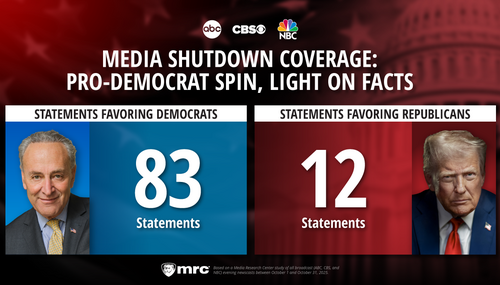 The liberal media is full of stories about how President Donald Trump has been supposedly ineffective in combating the spread of coronavirus. At the forefront of these attacks is the New York Times which actually published a column by their opinion writer, Gail Collins, calling the viral disease "Trumpvirus."
The liberal media is full of stories about how President Donald Trump has been supposedly ineffective in combating the spread of coronavirus. At the forefront of these attacks is the New York Times which actually published a column by their opinion writer, Gail Collins, calling the viral disease "Trumpvirus."
Well, Gail Collins, meet your own science writer at the Times, Donald G. McNeil, Jr., who countered the notion of an ineffective Trump with an analysis on Friday, "To Take On the Coronavirus, Go Medieval on It." The subtitle reveals that the early travel restrictions imposed by Trump have had a positive effect on stopping the spread of the disease: "Quarantines and restrictive measures served a purpose in the old days. They can now, too."
There are two ways to fight epidemics: the medieval and the modern.
The modern way is to surrender to the power of the pathogens: Acknowledge that they are unstoppable and to try to soften the blow with 20th-century inventions, including new vaccines, antibiotics, hospital ventilators and thermal cameras searching for people with fevers.
The medieval way, inherited from the era of the Black Death, is brutal: Close the borders, quarantine the ships, pen terrified citizens up inside their poisoned cities.
For the first time in more than a century, the world has chosen to confront a new and terrifying virus with the iron fist instead of the latex glove.
At least for a while, it worked, and it might still serve a purpose.
Keep in mind that when Trump restricted travel from China a month ago, many of the same liberal news outlets that are now calling him ineffective were then slamming him for supposed xenophobia for imposing the restrictions.
The White House, in defiance of recent American history, also opted to go medieval by aggressive measures like barring entry to non-Americans who were recently in China and advising Americans not to go to China or South Korea.
...As a result, they endorsed dropping the portcullis and shutting off air links to China.
They even created quarantine stations on military bases, the equivalent of Venice’s island lazarettos, where, in the time of the doges, the infected awaited their fate outside the city.
This has led to much consternation among other public health experts, who argue that travel restrictions can cause more panic, misery and death than they prevent. Crowds may besiege hospitals, supercharging the infection rate. Closed borders can cut off vital medications like insulin. Factory and shop closings mean lost wages, hardships and possibly recession.
Also, quarantines feed racism and stigma.
Officially, the World Health Organization opposes travel and trade restrictions. It reiterated that even as it declared the epidemic a global emergency on Jan. 30.
We heard a lot of complaints from the liberal media along these lines weeks ago but now comes the all important "but" from McNeil:
But it now admits that they helped.
BINGO!
The W.H.O.’s epidemic-modeling teams concluded that travel restrictions had slowed the spread of the virus outside China by two to three weeks.
For the United States, the delay was probably far greater. Air-traffic data shows that flights from China to the United States dropped much more than they did to Europe.
As of this writing, a single case not connected to any known transmission has turned up in California, but there are no indications of large outbreaks like those in Italy and Iran.
Harsh measures horrify civil libertarians, but they often save lives, especially when they are imposed in the early days.
Exit question: Should this article by the New York Times science writer be made mandatory reading for Gail Collins and the other Trump deranged members of the mainstream media who are currently blaming the President for failure to adequately address the outbreak of this virus?




